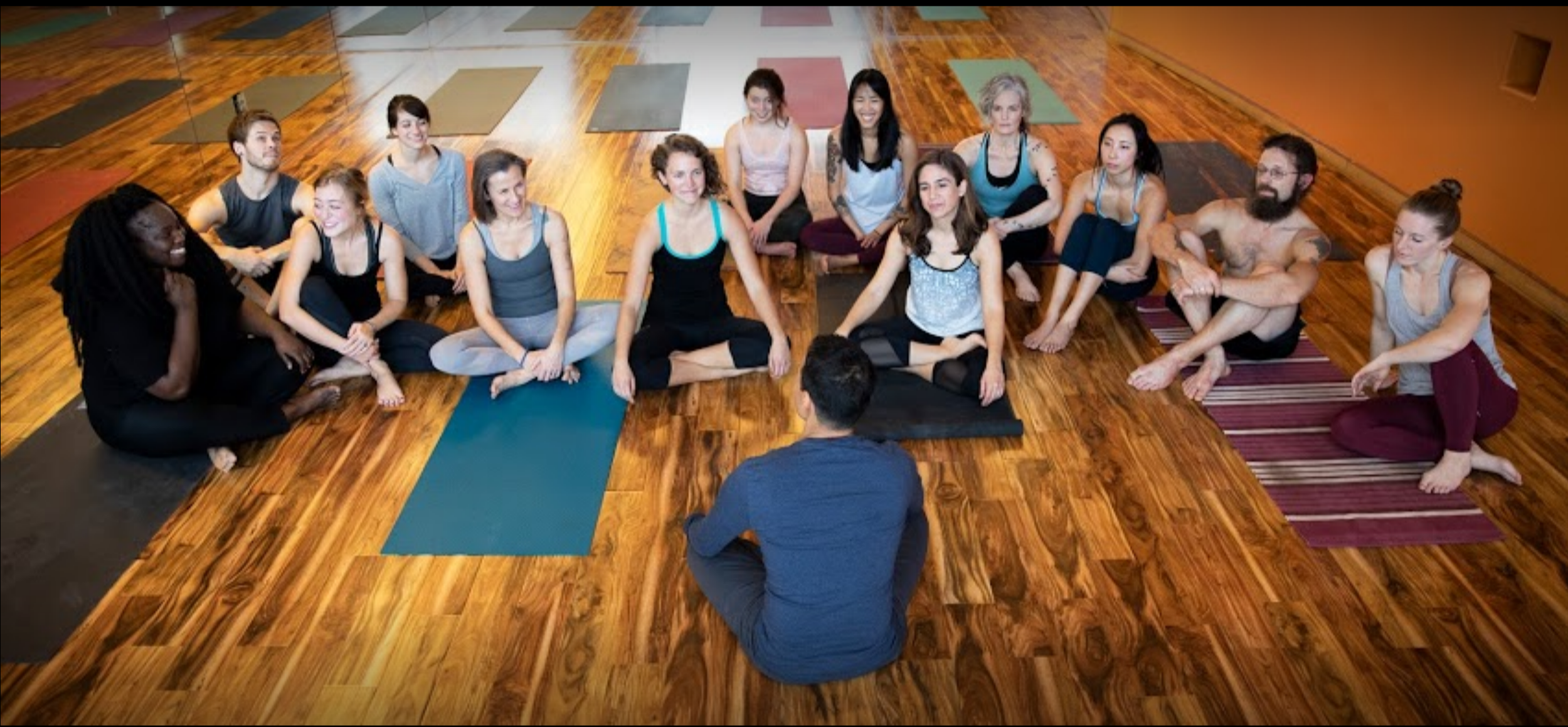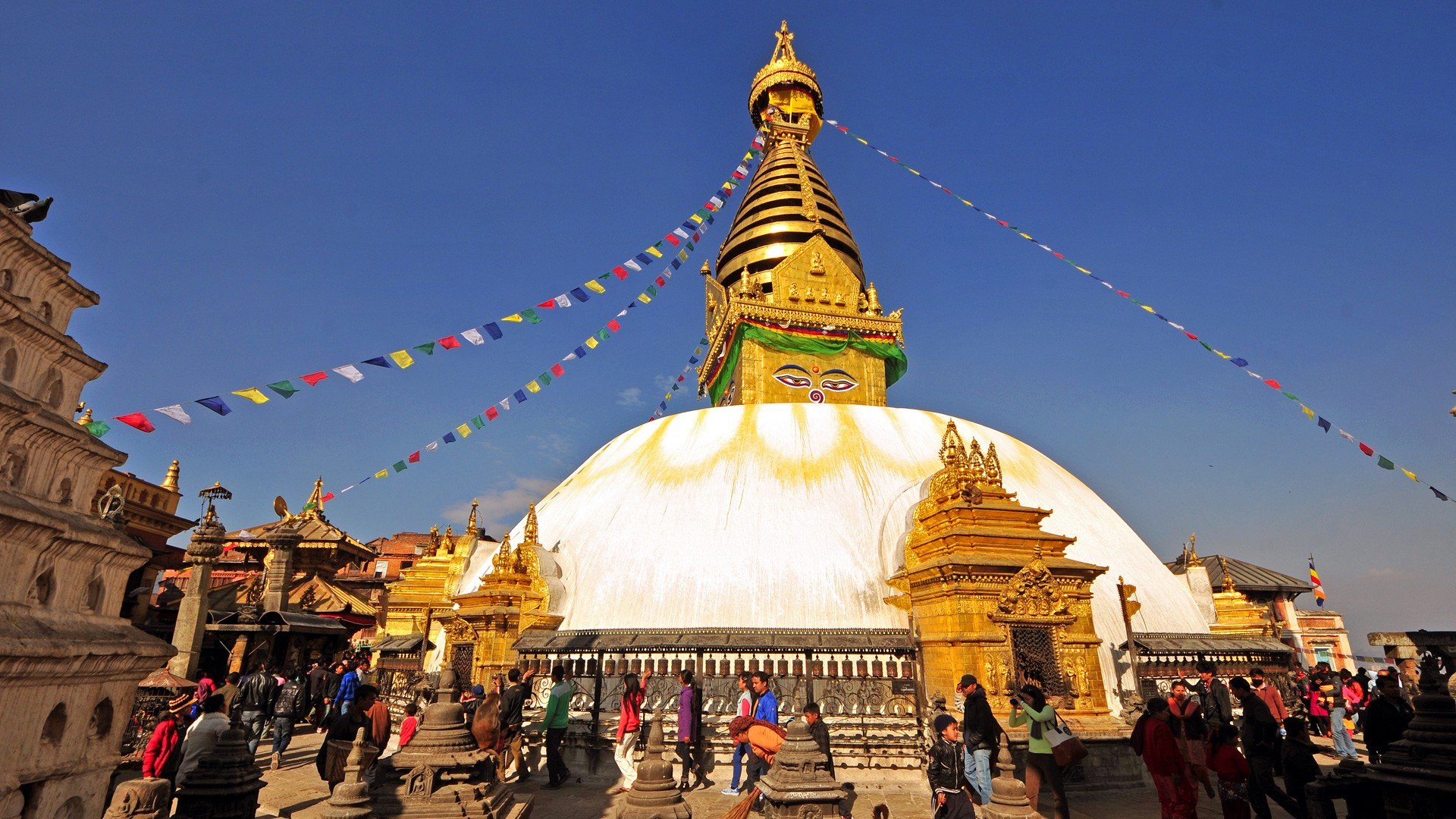
A Deeper Understanding of Yoga
A Lecture Series with Raj Patra
Photo by Bryan Mendoza in The Himalaya, 2020
Wednesdays, Jan-Feb 2026
The following series of lectures is offered as a part of the curriculum for our yoga training program. However, we open these lectures to the public because the topics, the content, and the approachability builds a philosophical foundation for modern practitioners.
With this backdrop of philosophical understanding, practitioners will notice that their physical practice gets embedded in the fabric of the inner traditions of yoga.
You are welcome to any or all of these lectures which are offered in an academic format, yet filled with personal stories, traditional mythology and demonstrations of practical application in everyday living.
Please note that while the series creates a complete journey, each lecture is self-contained and can be attended separately if needed.
Continuing Education Credits Available
Are you interested in earning continuing education credits with Yoga Alliance? This lecture series plus additional literature coursework is eligible for continuing education credits. Please email us if interested.
(Tibetan Yoga, Principles and Practices. Ian A Baker)
Lecture 1: Origin & Lineage of Yoga
Ashtanga Vinyasa, Bikram, Iyengar, Mysore, Forrest, Yin... so many styles, so many names in modern yoga! What do they mean? Where did they come from? Who started them? Join us as we time-travel the yoga lineages to find out where and how they have emerged from North and South India to the West.
Along the way, we’ll learn about yoga teachers and enlightened masters. In addition, we will watch a documentary that is perhaps the last videography of several well-known Indian yoga teachers.
January 14, 2026 | 5-8PM
Lecture 2: Who Am I?
The sum-total of the yogic pursuit and the essence of all its practices is captured in a single seeking:
Who am I?
In this lecture we will discuss Samkhya philosophy and the classical understanding of yoga from the perspective of Yoga Sutra. Here, we will understand the link between the universal force that converts life’s experiences through layers of decisions, thereby creating individual ego and giving birth to duality. Additionally, we will dig into the four states of existence and the nature of Turya through stories from Bhagavad Gita and mythologies of Hinduism.
January 21, 2026 | 5-8PM
Lecture 3: Patanjali’s Yoga Sutra
“Yoga Sutra of Patanjali” is arguably the most prominent of the Vedas and Upanishads that discuss precisely what is yoga and essentially what is the path. While the common understanding is that Sage Patanjali did not tell us the “how,” he left plenty of decoders for the most serious teachers, the secrets closely held within certain lineages. Even though most yoga pursuants know the existence of these sutras, not many know the practical utilization, and if the sutra should be of concern to a modern day practitioner.
Join us as we discuss all this and to what extent the Indian culture pays homage to Patanjali today.
January 28, 2026 | 5-8PM
Lecture 4: My Karma, Your Karma, It’s a Karma-coma
Karma is perhaps one of the most misapplied words in the western world, mostly in the context of tit-for-tat. In reality, the paths of Karma is exquisite to navigate for each Hindu and Buddhist practitioner. We will discuss the concept of Karma using some of the cornerstone Hindu texts, and boil them down to family drama, warfare, and how to make sense of a cab driver's monologue.
You will learn details about the three major contributors for Karma that binds humans to the wheel of Samsara (mortality) and how yogis pursue liberation from the debts of Karma.
Armed with this knowing, you cannot unknow. This may be liberating or scary, but with Karma, ignorance is certainly not bliss!
February 4, 2026 | 5-8PM
Lecture 5: Music and the Emotions of Chakra
The western chakra system of seven main chakras is the most widely known because of the popular book The Serpent Power written by John Woodroffe in 1918. It depict a quite uncommon system of a seven-chakra system which was not used by many tantrika lineages. Within the ancient tantric tradition, there are multiple chakra systems. (Some of the common chakra systems involve 3,5,7,9. The Tibetan Tantrika use the five chakra system, for example.)
Classical Music in India in all forms of instruments, vocals and dances are invocations of Rasa, or emotions through Raga (unchangeable melody compositions), Mudra (gestures), and Tala (rhythmic compositions).
You will gain a deep understanding of your musical preferences, and through the process gain some hint of your psychological (Rasa) biases, leading you to discover how to influence and balance the emotional energy of your Chakra system.
Navarasa means nine emotions: Shringara (love/beauty), Hasya (laughter), Karuna (sorrow), Raudra (anger), Veera (heroism/courage), Bhayanaka (terror/fear), Bibhatsa (disgust), Adbutha (surprise/wonder), Shantha (peace or tranquility).
February 11, 2026 | 5-8PM. NOTE: This lecture is best attended in-person; however Zoom attendance will be made available if in-person attendance is not possible.
Lecture 6: A Playbook of Happiness
It seems that human beings are engineered for two things: to fulfill some set of evolving desires, and to find happiness. These two can be in conflict. In this lecture you will receive a guide to reach and stay in a state of blissful joy in this modern world of technology, career and social obligations. Believe it or not, it is actually simple, practical, and addictive. And, no, this is not about positive thinking.
You will walk away with an equation for Happiness.
February 18, 2026 | 5-8PM
Lecture 7: Hinduism & Buddhism
Unlike Christianity or Buddhism, Hinduism did not develop from the teachings of a single founder. Moreover, it has diverse traditions, owing to its long history and continued development over the course of more than 3000 years. The term Hindu originally referred to those living on the other side of the Indus River, and by the 13th century, it simply referred to those living in India. It was only in the 18th century that the term Hindu became specifically related to an Indic religion generally.
The social caste system as described by Hindu Dharma was likely one of the biggest factors in the development of Buddhism. Buddhism developed in reaction to the established religion in India at the time - Hinduism (Brahminism). Buddhism, in contrast to Hinduism, has a single founder and while there is no singular text there are texts that outline the teachings of the Buddha as the great and exemplary teacher, while lineages have different understandings and approaches to what Gautam Buddha taught.
While Buddhism has spread around the world over the past century, its origin, teaching, principles, and approaches are nothing but Hindu. In this lecture, we will learn deep similarities and dissimilarities and how they came to exist.
February 25, 2026 | 5-8PM
Tuition:
Each lecture is priced at $50.
Entire series of seven lectures can be purchased at a discounted price of $300.
Attendance:
Schedule for lectures are in Pacific Time. Distant participation is available on Zoom.
Faculty: Raj Patra (YFL Co-Founder)
Raj’s yoga journey started in Kolkata, India at the age of seven at Ghosh’s Yoga College which was established in 1923 by Bishnu Ghosh, younger brother of Sri Paramhansa Yogananda, the author of “Autobiography of a Yogi”. Incidentally, Raj grew up on the same street, blocks away from the birthplace and house of Swami Vivekananda, the personality single-handedly responsible for introducing Yoga and Hinduism to the United States in 1893. For Raj, yoga involved not only physical exercises, pranayama, and meditation, but a prescription of lifestyle, in close association with Hatha Yoga Pradipika, and helped cure ailments and improve quality of mental and physical connections.
Over the the past four decades Raj has studied in the lineages and inspirations of Yogananda, Sri Anandamayi Ma, Swami Vivekananda, Bishnu Ghosh, Dr. A. G. Mohan, Zhander Remete, 17th Gyalwa Karmapa of Kagyu Lineage, venerable Chöje Lama Phuntsok Rinpoche, Ajayan Borys, and most importantly, Guruji Andrey Lappa, founder of Universal Yoga and teacher of Tantrika. Raj is well-versed in systems of Hatha yoga, Ashtanga Vinyasa yoga and its western derivations, Bikram yoga, Power yoga, Yin yoga, Shadow yoga, and the extensive system of Universal Yoga and Shiva Nata (Dance of Shiva), and has spent time in Ramakrishna Mission, Dakshineshwar Temple, Balur Matth Vivekananda Institute in Kolkata, and Karma Lekshey Ling monastery in Kathmandu, Nepal. Raj is a Reiki Master, and initiated in the Modern Mystery School.
Raj’s mission is to educate yoga practitioners and teachers about Yoga in its authentic and universal way, enriched by centuries of lineage. His activities and energy these days revolve around teaching ancient philosophies in modern and scientific contexts, inspiring people to live life in conscious and meaningful ways, and relentlessly studying with and from yoga masters. Learn more.











